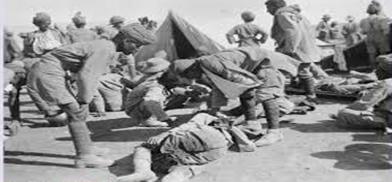41 years on, Manipuri classic relives forgotten chapter of British Raj
Forty-one years ago novelist, short story writer, playwright and lyricist MK Binodini Devi, a member of the erstwhile royal family of Manipur, won a Sahitya Akademi Award for "Boro Saheb Ongbi Sanatombi", a poignant love story of her aunt Sanatombi and Lt. Col. Henry St. P. Maxwell, the British Political Agent in the subjugated Tibeto-Burman kingdom of Manipur

Forty-one years ago novelist, short story writer, playwright and lyricist MK Binodini Devi, a member of the erstwhile royal family of Manipur, won a Sahitya Akademi Award for "Boro Saheb Ongbi Sanatombi", a poignant love story of her aunt Sanatombi and Lt. Col. Henry St. P. Maxwell, the British Political Agent in the subjugated Tibeto-Burman kingdom of Manipur.
Now painstakingly translated into English by her son L. Somi Roy and published by Penguin, "The Princess and the Political Agent" unveils vanquished love and the humbling of a small but proud kingdom in the aftermath of the Anglo-Manipuri War of 1891.
Largely forgotten around the world, the Anglo-Manipuri War grabbed international headlines in 1891. A scandal of imperial avarice and colonialist policy, it featured on the front pages of the LondonIllustrated Newspaper, the NewYork Times, and the Statesman of Calcutta for the better part of the year. A Reuters correspondent came
to Manipur and filed updates that went around the world. Avid readers in Australia, New Zealand, Singapore and France followed the events as they unfolded.
"For all the story's foundation in Manipur's history and its author's deep first-hand knowledge of the milieu and mores of its courtly culture," Binodini was clearly emphatic in her original author's preface that the book "is not biography, it is not history" but a work of fiction, Soni Roy says in the translator's note.
"Someone had said to me that this was a book of record, and that I would not get much material from it for the story. But for me, if the chronicle had not existed, this book would not have been possible," Roy quotes Binodini as saying, adding that the author gleaned incidents and characters from the most fleeting of records in the court chronicle and other documents.
She melded them with family lore and memory to fictionalize the palace and social realities in her story. "Only Binodini knew precisely - and was careful not to divulge - which parts of her novel were from these sources, oral or text, and which were the creation of her imagination," Roy writes.
As Binodini wrote in her author's preface to the original edition: One big question was, why, when the British had just newly-conquered Manipur and the pain of being subjugated was still raw, did the daughter of Surchandra (the subjugated ruler) become the wife of the enemy - the enemy–husband here being Maxwell, who falls in love with Princess Sanatombi and takes her as his consort.
A careful reading of the book would provide an answer as, brought up in privilege found only in fairy tales, Sanatombi was steadfast in her resolve even as she faced the censure of her own blood relatives.
"I have taken up a task well beyond my ability but I have tried to depict a Sanatombi who belonged to a world of alien ways, who had lived during a time of great change in Manipur's history," Binodini writes.
"This book is built on the foundations of history. I have tried to fill in, as I wished, within the foundational frame of unmovable events. I have taken as much liberty as the conventions of writing a novel allows. With dates that were not very far apart, I have moved these episodes around a bit. I have mentioned all the actual
historical figures in the book with respect. In doing this, I have had no thought of mentioning them with any disrespect or depicting them wrongly. Only conventions of fiction have given them a different face.
This book is not biography, it is not history, and this I trust the readers will grant me," the author states.
This book is as relevant today as it was when it was written almost half a century ago. Proof enough that fact and fiction can co-exist.









Post a Comment